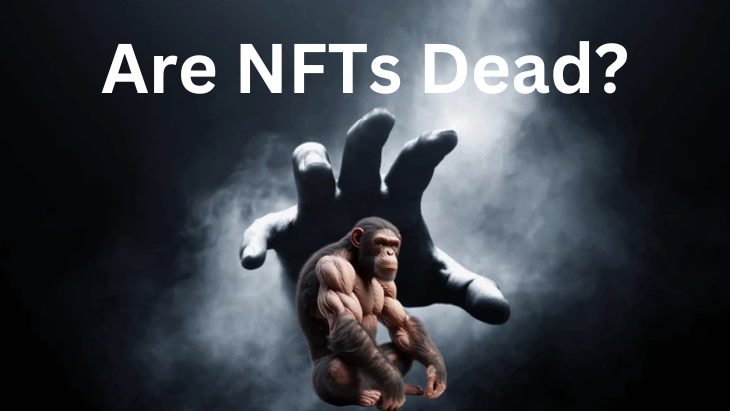In 2021, NFTs (Non-Fungible Tokens) became synonymous with digital ownership, fueled by record-breaking sales and viral hype. However, by 2023, the market faced a stark downturn, with trading volumes collapsing and critics declaring NFTs “dead.”
Drawing insights from DappRadar’s analysis of the ongoing “NFT winter,” this article explores whether NFTs are truly obsolete or simply transitioning into a more mature phase.
The Meteoric Rise and Sudden Chill
The NFT market’s 2021 boom, which saw $25 billion in trading activity, was driven by speculative fervor and cultural momentum. Yet, DappRadar’s 2023 report highlights a brutal correction: the NFT market shrank by over 50% in Q2 2023, with trading volumes plummeting to $1.7 billion—down from $3.9 billion in Q1.
This decline mirrors broader crypto market struggles, as falling Bitcoin and Ethereum prices eroded investor confidence.
Key factors behind the downturn include:
– Crypto Price Collapse: Ethereum (the backbone of most NFTs) dropped over 60% from its 2021 peak, directly impacting NFT valuations.
– Liquidity Crunch: Buyers vanished, leaving sellers struggling to offload assets. For instance, Bored Ape Yacht Club’s floor price fell from 150 ETH in 2022 to under 30 ETH by mid-2023.
– Speculative Fatigue: Many projects failed to deliver utility, leading to disillusionment.
The Current State: Survival of the Fittest
While the market is battered, NFTs are not extinct. DappRadar notes niche resilience in sectors like gaming, art, and membership-based utilities:
1. Gaming NFTs: Games like Axie Infinity and Parallel retained dedicated user bases, with in-game asset trading sustaining activity.
2. Blue-Chip Art: Established collections like CryptoPunks and Art Blocks saw relative stability, signaling enduring cultural value.
3. Brand Experiments: Companies like Starbucks (with its Odyssey loyalty program) and Reddit (with avatar NFTs) quietly expanded Web3 integrations, focusing on utility over speculation.
Challenges Amplified by the “NFT Winter”
DappRadar’s analysis underscores systemic issues:
– Platform Struggles: Marketplaces like OpenSea faced layoffs and declining fees, while competitors like Blur prioritized trader incentives, fragmenting liquidity.
– Regulatory Heat: Governments intensified scrutiny of NFT scams and IP violations, creating uncertainty for creators.
– Creator Royalty Erosion: Platforms like Blur and Magic Eden abandoned enforced royalties, squeezing artist revenue.
Innovation Amid the Freeze
Despite the gloom, builders are pushing for long-term value:
1. Layer-2 Blockchains: Ethereum scaling solutions (e.g., Polygon, Arbitrum) reduced gas fees by 80–90%, making NFTs accessible to mainstream users.
2. Dynamic NFTs: Projects like Async Art enable updatable NFTs, useful for gaming or real-world data tracking.
3. DeFi Integration: NFT fractionalization platforms (e.g., Unicly) allow shared ownership, improving liquidity.
The Path Forward
DappRadar suggests the market’s future hinges on:
– Utility-Driven Models: NFTs tied to experiences (e.g., concerts, subscriptions) or physical goods (e.g., luxury authentication).
– Institutional Adoption: Brands like Nike and Tiffany leveraging NFTs for community engagement, not quick profits.
– Regulatory Clarity: Clearer rules could stabilize the market and attract traditional investors.
Conclusion: Winter is a Season, Not an End
The NFT market is undeniably colder, but reports of its death are exaggerated. As DappRadar notes, the downturn has purged speculators, allowing serious projects to focus on sustainable use cases. Just as the dot-com crash paved the way for tech giants, the “NFT winter” may ultimately strengthen the ecosystem.
The era of easy money is over, but the technology’s potential—for digital ownership, creative economies, and decentralized identity—remains alive. NFTs aren’t dead; they’re growing up.
